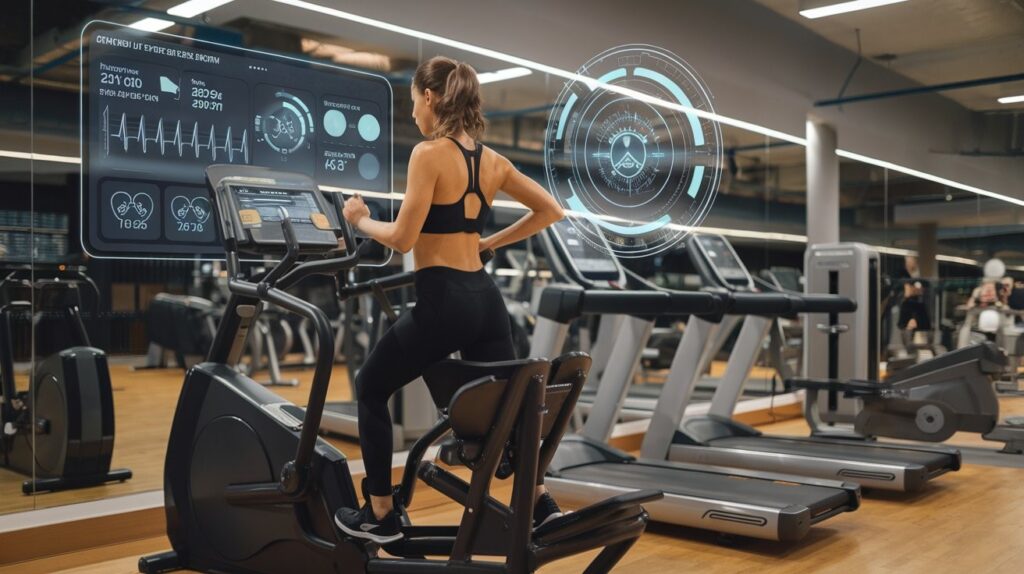
In the quest for peak physical performance, many athletes and fitness enthusiasts wonder, “Can you train 8 days a week?” While this question might seem impossible at first glance, advances in training methodologies and the integration of artificial intelligence (AI) have brought new insights into how we can push our physical limits. In this article, we’ll explore the science behind overtraining, the role of AI in optimising your workouts, and how to balance different types of training for maximum results.
Understanding the Basics of Training
Can You Train 8 Days a Week?
The concept of training 8 days a week is more a metaphor for pushing the boundaries of traditional workout routines than a literal suggestion. However, with AI-driven tools, it is now possible to create highly customised training plans that allow for maximised efficiency and reduced recovery times. AI can analyse data from your workouts, sleep patterns, and overall health to adjust your training regimen in real-time, helping you avoid overtraining while still achieving your fitness goals.
Understanding Overtraining: What Does It Mean?
Overtraining occurs when the body does not have adequate time to recover between intense workout sessions. Symptoms can include fatigue, decreased performance, and even injury. AI can play a crucial role in monitoring these indicators, offering early warnings when you might be pushing too hard and suggesting adjustments to your routine to prevent burnout.
Cardiovascular Training
Incorporating Cardiovascular Training into Your Daily Routine
Cardiovascular training is essential for heart health and overall fitness. Incorporating it into your daily routine can be as simple as brisk walking, cycling, or using an AI-powered fitness app that customises workouts based on your current fitness level and goals.
The Benefits of Low-Impact Cardiovascular Exercises for Joint Health
Low-impact exercises, such as swimming or cycling, are easier on the joints and ideal for those with previous injuries or beginners.
AI tools can recommend the best low-impact exercises based on your individual needs, ensuring that your cardiovascular health improves without putting undue stress on your body.
High-Intensity Interval Training (HIIT): A Powerful Cardiovascular Workout
High-Intensity Interval Training (HIIT) has gained popularity for its effectiveness in burning calories and improving cardiovascular fitness in a short amount of time.
AI can optimise HIIT workouts by adjusting the intensity and duration based on your real-time performance, ensuring you get the most out of each session.
The Role of Heart Rate Zones in Effective Cardiovascular Workouts
Understanding heart rate zones is key to effective cardiovascular training. AI can continuously monitor your heart rate during workouts, ensuring you stay within the optimal zone to achieve your specific goals, whether it’s fat loss, endurance, or performance enhancement.
Cardiovascular Training vs. Strength Training: Finding the Balance
Balancing cardiovascular and strength training is crucial for a well-rounded fitness routine. AI can help by analysing your progress in both areas and suggesting adjustments to ensure that neither aspect is neglected, leading to improved overall fitness.
How to Improve Cardiovascular Endurance: Training Tips and Strategies
Improving cardiovascular endurance requires a strategic approach. AI can develop personalised training strategies that gradually increase the intensity and duration of your workouts, helping you build endurance safely and effectively.
Different Types of Cardiovascular Exercises: Finding the Right Fit for You
Not all cardiovascular exercises are created equal, and finding the right fit for your lifestyle and goals is crucial. AI can analyse your preferences and physical condition to suggest the best exercises, whether it’s running, swimming, or cycling.

Ai Strength Training
The Importance of Tracking Progress and Setting Goals in Strength Training
Tracking progress is vital in strength training to ensure continuous improvement. AI tools can automatically track your lifts, repetitions, and progress over time, helping you set realistic goals and stay motivated.
Strength Training for Rehabilitation and Injury Prevention
Strength training is not just for building muscle; it’s also crucial for rehabilitation and injury prevention. AI can design customised rehab programs that focus on strengthening specific muscle groups while avoiding strain on injured areas.
The Role of Periodization in Strength Training Programs
Periodization involves varying your training intensity and volume over time to maximise gains and prevent plateaus. AI can create periodized training programs that adapt to your progress, ensuring continuous improvement without risking overtraining.
Strength Training for Busy Professionals: Making the Most of Limited Time
For busy professionals, finding time to train can be challenging.
AI can create efficient strength training routines that fit into even the tightest schedules, ensuring you make the most of every minute spent in the gym.
How to Train with Free Weights: Tips for Effective Workouts
Free weights are a staple in strength training for their versatility and effectiveness. AI can provide tips and real-time feedback on your form, helping you train safely and effectively with free weights.
Incorporating Strength Training into Your Home Workouts
Home workouts have become increasingly popular, and strength training is no exception.
AI-powered fitness apps can design effective strength training routines using minimal equipment, making it easy to stay fit without leaving your home.
Strength Training for Endurance Athletes: Balancing Strength and Cardiovascular Fitness
Endurance athletes often neglect strength training, but it’s crucial for performance.
AI can help balance strength and cardiovascular fitness, ensuring that endurance athletes build the necessary strength without compromising their primary focus.

Balancing Training and Recovery
Recovery is just as important as training, and balancing the two is key to long-term success.
AI can monitor your recovery metrics, such as sleep quality and heart rate variability, to suggest when to push harder and when to rest.
The Role of AI in Training
AI has revolutionised the way we train by providing personalised, data-driven insights that optimise performance and recovery. From custom workout plans to real-time feedback, AI ensures that every aspect of your training is tailored to your needs.
Conclusion
Quality Over Quantity
When it comes to training, quality is more important than quantity.With the help of AI, you can ensure that every workout is as effective as possible, reducing the risk of overtraining and maximising your results.
Possible Actions for Readers:
- Click through to related articles on how AI is changing fitness and workout routines.
- Share the article on social media to help others learn about the benefits of AI in training.
- Also read :- Top 5 easy to use AI Image Generators of 2024



